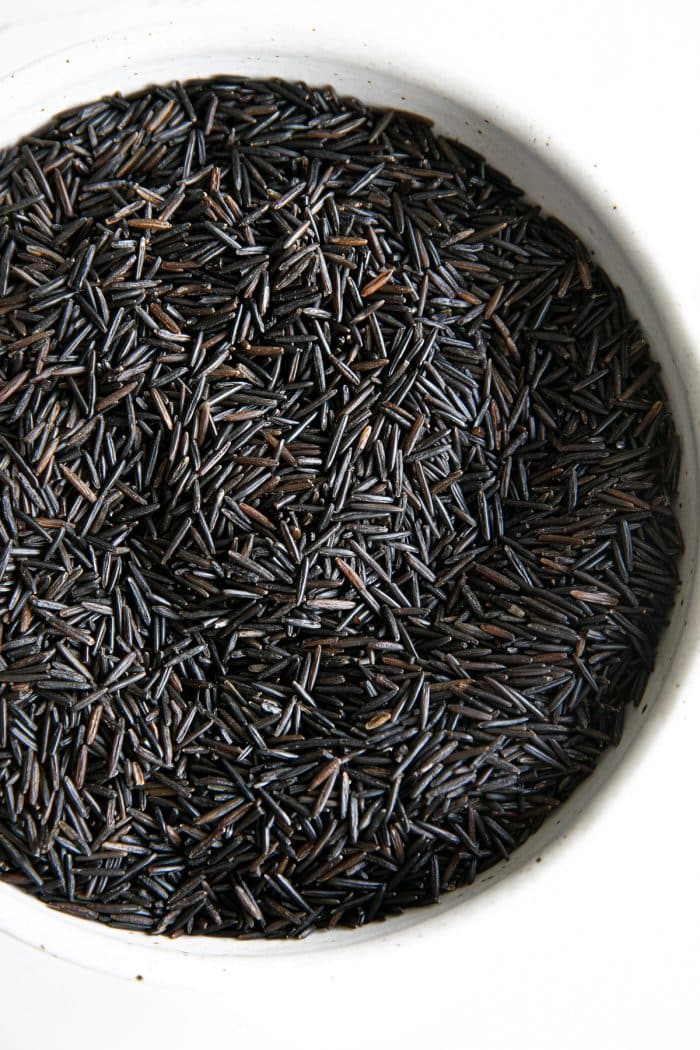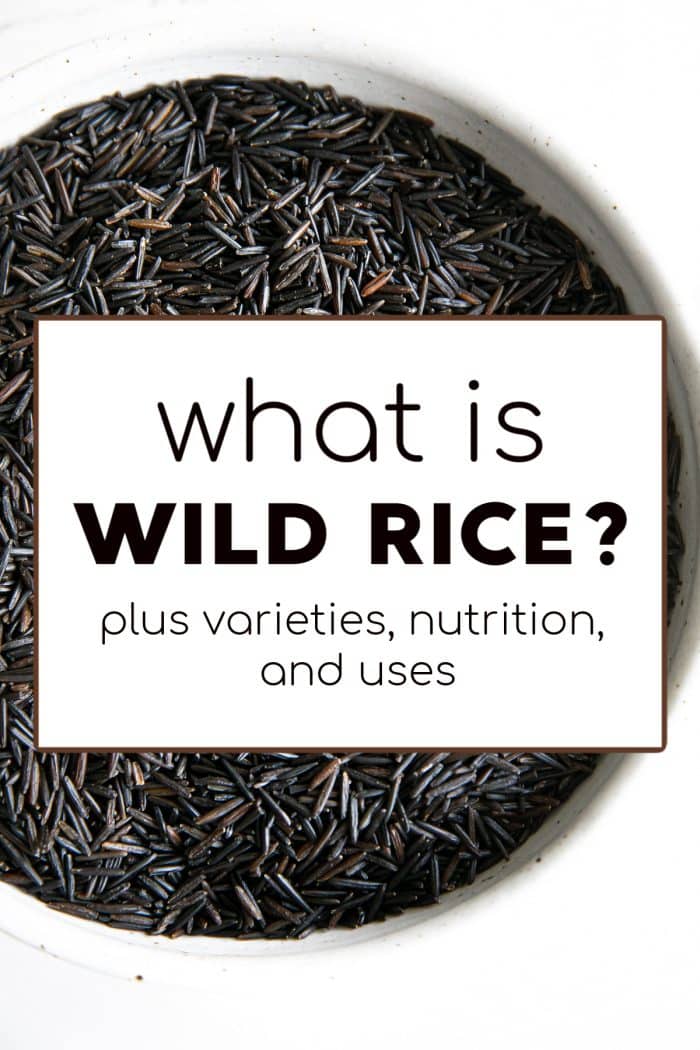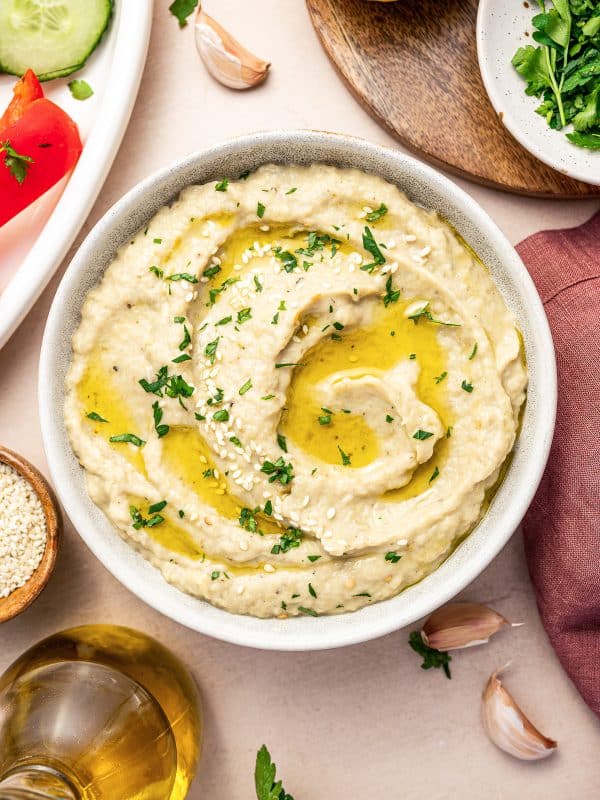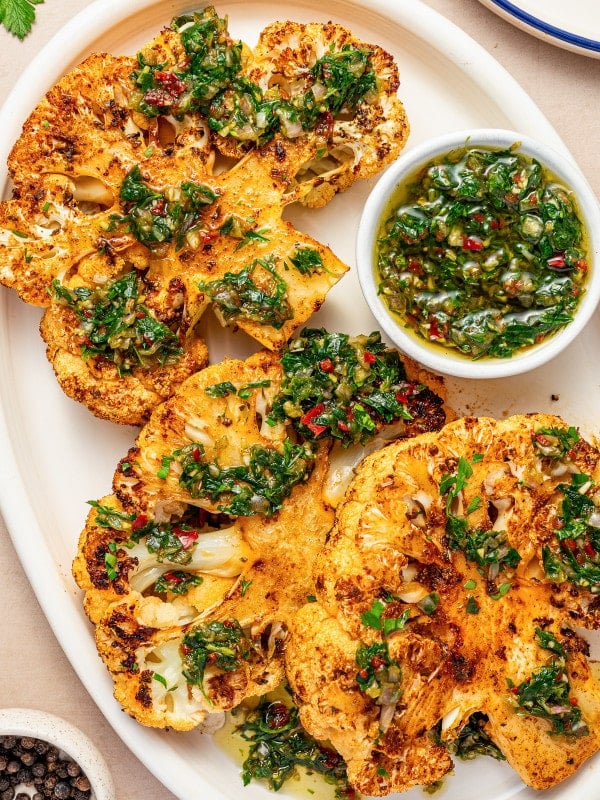This post may contain affiliate links. Please read our disclosure policy.
Everything you’ve ever wanted to know about Wild Rice including what it is (hint – it’s not actually a type of rice at all), nutrition, varieties, and recipes.

What is Wild Rice?
Wild rice is a whole-grain species of semi-aquatic grass native to shallow waters and slow-flowing streams of Minnesota, Wisconsin, Idaho, and the Great Lakes region of North America that produces edible seeds that resemble rice. It can even be found along the Atlantic and Gulf coasts of the United States and parts of central Texas. In addition to corn, wild rice is one of the two most common grains native to North America.
Gathered for centuries by tribes all over North America, it is considered sacred to many Native American cultures. The Ojibwa people of Canada and the northern Midwestern United States, for example, refer to wild rice as manoomin, meaning “harvesting berry” or “good berry”. Highly nutritious, “wild” wild rice was important culturally and economically.
Despite its name and similarities in appearance, wild rice has no relation to Asian rice (Oryza sativa). It is actually an aquatic grass with an edible grain. Compared to true rice, it has a chewy texture, nutty flavor, and longer cooking time.
Species of Wild Rice:
There are three species of wild rice native to North America and one native to Asia.
- Northern wild rice (Zizania palustris) – annual plant native to the North American Great Lakes, Minnesota, Wisconsin, and Idaho. It is also found in regions throughout Canada.
- Wild Rice (Zizania aquatica) – an annual plant that grows along the Saint Lawrence River in Florida, and along the Gulf and Atlantic coasts of the US.
- Texas Wild Rice (Zizania. texana) – A perennial plant only found in a small area along the San Marcos River in Texas. Due to pollution, Texas wild rice is in danger of extinction.
- Manchurian wild rice (Zizania latifolia) – A perennial plant native to China that has nearly all but disappeared from its native growing area.
RELATED: Different Types of Rice: Varieties and What to Do With Them
Wild Rice Varieties
There are two varieties of wild rice: cultivated or wild-grown.
Cultivated Wild Rice:
Cultivated wild rice is basically farmed rice. Cultivated wild rice is grown under regulated conditions in “grow puddles”, or man-made paddies, to mimic its native growing conditions. Most cultivated wild rice is grown in Minnesota and California – usually not organically.
Typically dark brown, or black, in color, its tougher and takes longer to cook when compared to “true” wild rice. The reason for this is because most commercially grown rice is fermented or cured to give it a more uniform dark brown or black color.
Less expensive, most types of wild rice available at grocery stores are considered cultivated wild rice.
True Wild-Grown Wild Rice:
True wild rice is grown in the wild and harvested by hand from lakes and rivers in Minnesota and Canada. Less readily available, it can be quite expensive, averaging approximately $9 per pound (cultivated wild rice, on the other hand, typically costs $3 to $5 per pound.)
The earthy flavor of “wild” wild rice has a somewhat more robust, smoky flavor, and a lighter, more tender texture.
Nutrition and Benefits
A 3.5-ounce (100-gram) serving of cooked wild rice provides (source):
- Calories: 101
- Carbohydrates: 21 grams
- Protein: 4 grams
- Fiber: 2 grams
- Fat: < 1 gram
- Vitamin B6: 7% of the
- Folate: 6% of the Daily Value (DV)
- Magnesium: 8% of the DV
- Phosphorus: 8% of the DV
- Zinc: 9% of the DV
- Copper: 6% of the DV
- Manganese: 14% of the DV
With 101 calories and 2 grams of fiber per 3.5-ounce (100-gram) serving, wild rice contains slightly fewer calories and slightly more fiber when compared to the same serving of brown rice or white rice (112 and 130 calories) and (1.8 and 0.4 grams of fiber), respectively (source 1, 2, 3, 4).
Compared to many other types of rice (including brown and white rice), wild rice contains more protein (source). This volume of protein, however, isn’t what makes its protein so special.
Wild rice is a complete protein – a protein that contains all nine amino acids. Amino acids, the building blocks of life, play a crucial role in proper regulation and function of the body.
Your body needs 20 amino acids to function properly, but nine of these we can only get via the food we eat – these are known as the essential amino acids. Wild rice contains all nine, making it a highly prized and nutritious food for people following any diet, but especially those who are vegan or vegetarian.
Wild rice is also a rich source of antioxidants (30 times higher than in white rice) believed to help protect against the development of and progression of certain chronic diseases such as cancer and cardiovascular disease. And though it has not yet been tested in humans directly, animal studies suggest that wild rice may help lower bad cholesterol levels (4, 5).
As in true rice, wild rice is completely gluten-free.
Wild Rice Recipes
Wild rice is a delicious and nutritious addition to a variety of different dishes and is an easy substitute for starchy refined grains and sides (e.g., pasta, white rice, etc.) Add to casseroles, serve in soup and stews, salads, or your favorite side dish.
Cranberry Wild Rice Pilaf with Sweet Potatoes
Turmeric Broth Soup with Wild Rice and Vegetables
Wild Rice Salad with Beets, Oranges and Whipped Lemon Ricotta
Buying and Storing
Wild rice is available in the rice section of most major supermarkets. Cultivated varieties are easier to find when compared to wild-grown, and you can easily spot the difference when comparing their color and price; wild-grown rice is usually brown or dark brown in color and more expensive (around $9 per pound). Cultivated wild rice, on the other hand, is dark brown to black in color and less expensive (around $3-5 per pound).
When stored in an airtight container and in a cool dry place, uncooked wild rice will keep for years. Once cooked, transfer to an airtight container and keep stored in the refrigerator for up to one week.
You may also freeze cooked wild rice by transferring to, yep, an airtight container or freezer-safe ziplock bag and placing in the freezer for up to 4-6 months.
More Rice Recipes,
One-Pot Chicken, Kale, and Rice Soup
Easy Chicken and Rice Soup Recipe
How to Cook Perfect Rice on the Stove
Do you love wild rice? Please leave me a comment and let me know! I always love to hear your thoughts.















Great info, thank you